There is a small forrest at the cementary where you can easily take somepictures of squirrels in autumn. And Autumn is the best time to take some squirrel pictures since all of them are collecting food for the winter and also the colorful leaves on the ground make the pictures more interesting. At the cementary the squirrels are not really afraid of humans and you can get really close to them without them fleeing from you. They are used to humans and they get fed by humans that bring nuts and other food. But some of them are also stealing some food from the bird feeders you can find there a lot. It is funny watching them and they are really good climbers, some of them run upside down down on a tree and back up again with food in their mouth.
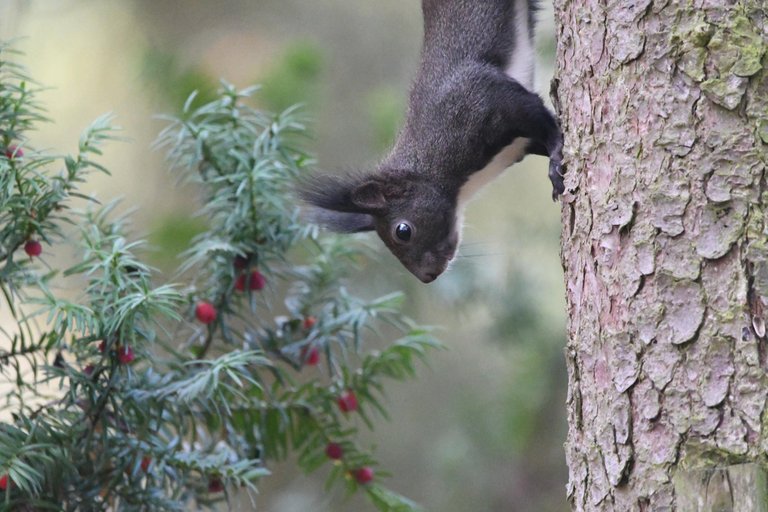
Squirrel Upside Down. Picture: Florian Glechner.
| Camera used | Nikon D500 |
|---|
| Lens used | Sigma 150-600 mm lens |
| Filter used | none |
| Exposure Time | 1/1000 Seconds |
| Aperture used | F6.3 |
| Focal Length | 600 mm |
| Time | 09:24 am |
| ISO | 5000 |
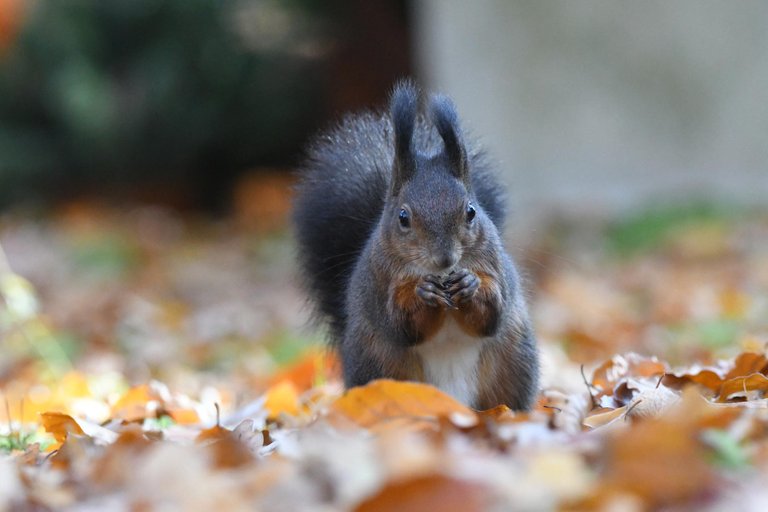
Squirrel eating a nut in between fallen leaves. Picture: Florian Glechner.
| Camera used | Nikon D500 |
|---|
| Lens used | Sigma 150-600 mm lens |
| Filter used | none |
| Exposure Time | 1/640 Seconds |
| Aperture used | F6.3 |
| Focal Length | 350 mm |
| Time | 10:04 am |
| ISO | 9000 |
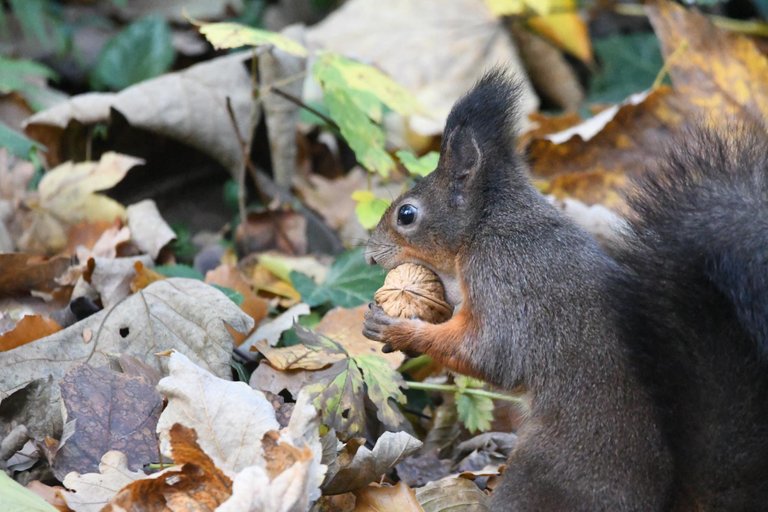
Big catch. Picture: Florian Glechner
| Camera used | Nikon D500 |
|---|
| Lens used | Sigma 150-600 mm lens |
| Filter used | none |
| Exposure Time | 1/1000 Seconds |
| Aperture used | F6.3 |
| Focal Length | 600 mm |
| Time | 09:04 am |
| ISO | 20000 |

Squirrel in the forest. Picture: Florian Glechner.
| Camera used | Nikon D500 |
|---|
| Lens used | Sigma 150-600 mm lens |
| Filter used | none |
| Exposure Time | 1/1000 Seconds |
| Aperture used | F6.3 |
| Focal Length | 600 mm |
| Time | 09:09 am |
| ISO | 12800 |
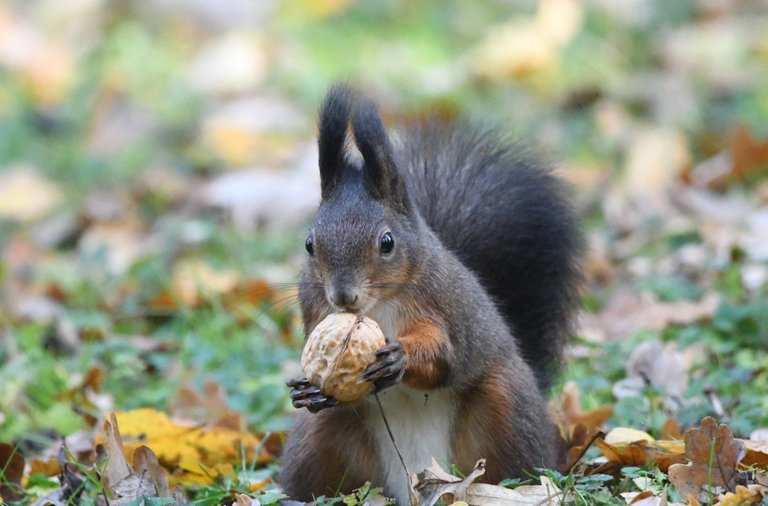
Squirrel with a yummy nut. Picture: Florian Glechner.
| Camera used | Nikon D500 |
|---|
| Lens used | Sigma 150-600 mm lens |
| Filter used | none |
| Exposure Time | 1/1000 Seconds |
| Aperture used | F6.3 |
| Focal Length | 600 mm |
| Time | 09:34 am |
| ISO | 14400 |
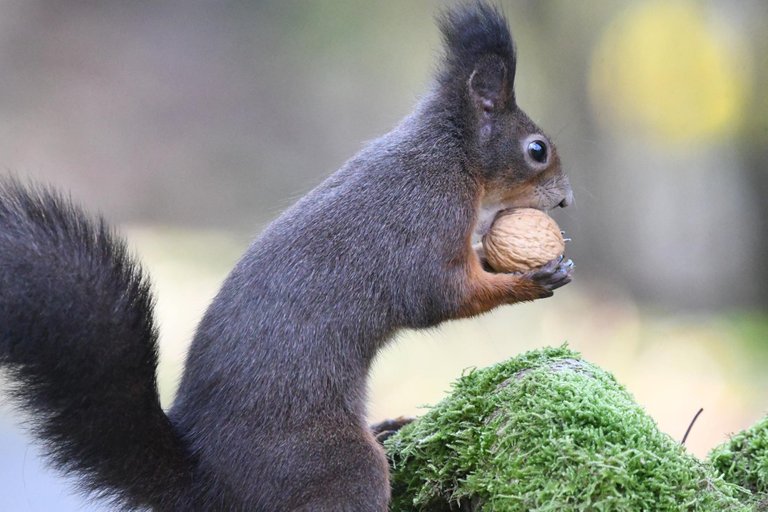
| Camera used | Nikon D500 |
|---|
| Lens used | Sigma 150-600 mm lens |
| Filter used | none |
| Exposure Time | 1/1000 Seconds |
| Aperture used | F6.3 |
| Focal Length | 600 mm |
| Time | 09:36 am |
| ISO | 5000 |
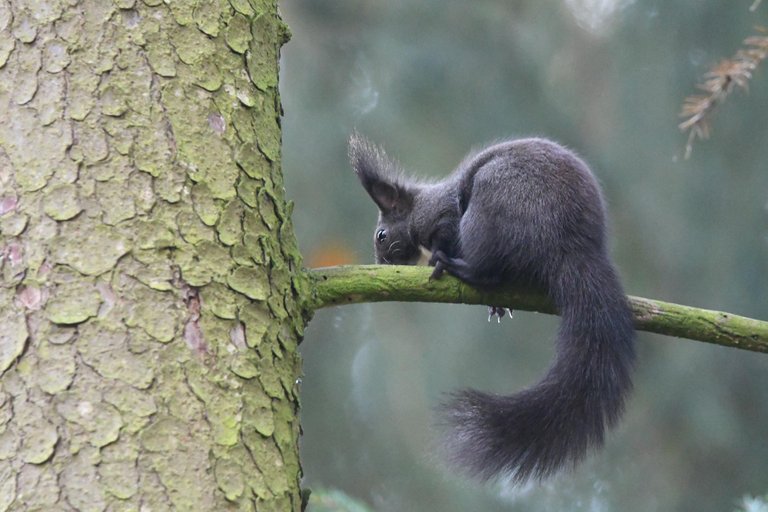
| Camera used | Nikon D500 |
|---|
| Lens used | Sigma 150-600 mm lens |
| Filter used | none |
| Exposure Time | 1/800 Seconds |
| Aperture used | F7.1 |
| Focal Length | 600 mm |
| Time | 09:46 am |
| ISO | 16000 |
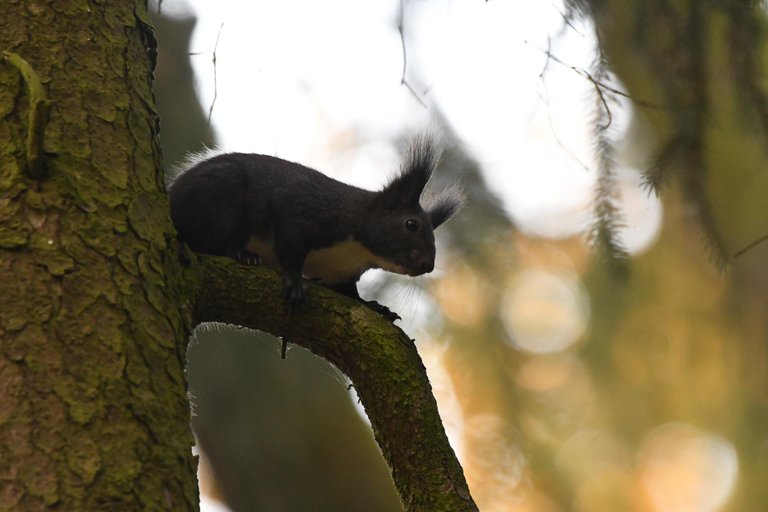
| Camera used | Nikon D500 |
|---|
| Lens used | Sigma 150-600 mm lens |
| Filter used | none |
| Exposure Time | 1/800 Seconds |
| Aperture used | F6.3 |
| Focal Length | 600 mm |
| Time | 09:49 am |
| ISO | 5000 |
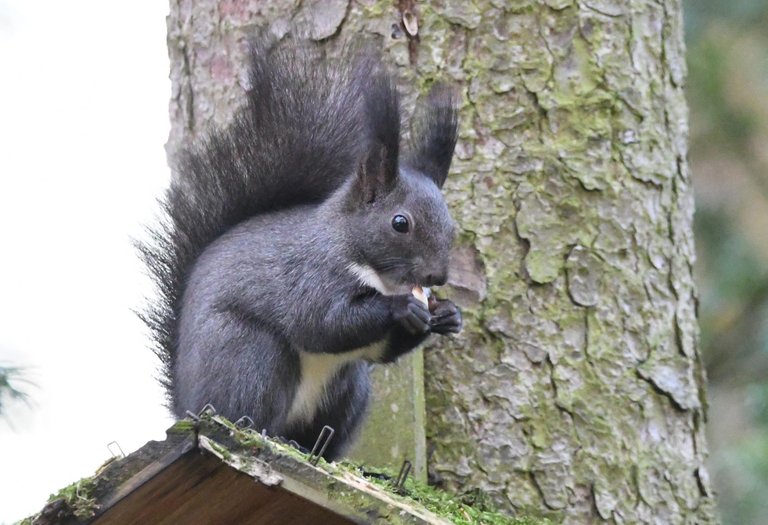
| Camera used | Nikon D500 |
|---|
| Lens used | Sigma 150-600 mm lens |
| Filter used | none |
| Exposure Time | 1/1000 Seconds |
| Aperture used | F7.1 |
| Focal Length | 600 mm |
| Time | 09:51 am |
| ISO | 12800 |









Super süß! Bei uns sind die meisten rot und nicht so dunkel.
Kleine technische Frage: ISO 20.000? Ist das normal? Bei meiner Kamera (Canon Eos 60D) ist der maximale ISO-Wert 6400 und ich finde es schon um die 1000 grenzwertig, was das Rauschen betrifft. Unterscheiden sich die Kameras so stark in der Qualität?
Im winter haben die meisten Eichkätzchen eine dunkle Fell farbe, werden erst im Frühling Sommer wieder braun /rot gefärbt.
Nein bei den ISO hatte ich leider bei diesen Bildern den Wert irrtürmlich auf Automatik gestellt und vergessen die Begrenzung zu aktivieren, weil es doch relativ dunkel war im Wald hat die Automatik so eine hohen Wert gewählt. Ich war selbst überrascht dass die Bilder nur wenig rauschen.